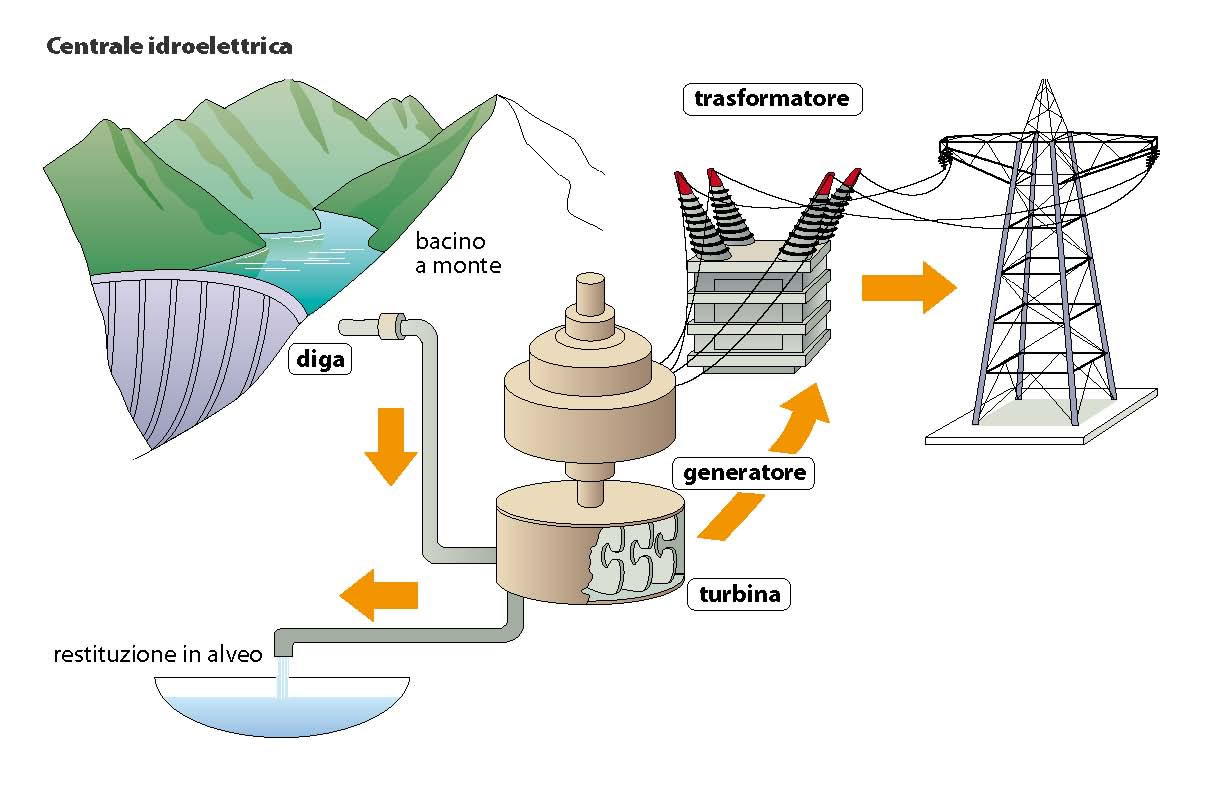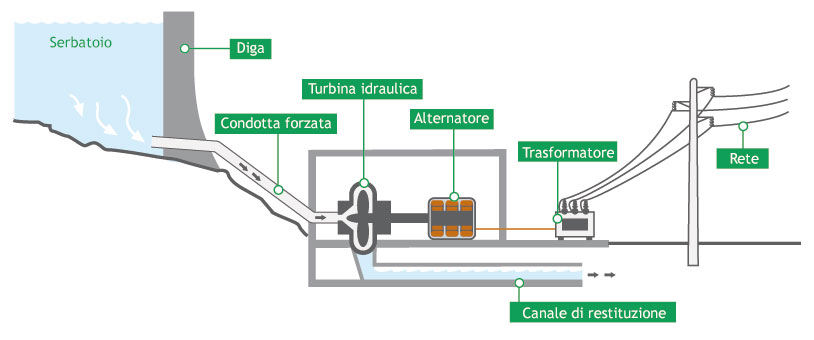 The hydroelectric plant converts the hydraulic energy of a natural or artificial watercourse, in electrical energy. In general, the functional scheme includes the blocking structure, a dike or a crossbar, which intercepts the course of water creating a reservoir which may be a tank or a dock, where it is created a layer of water. Through structures such as channels and headrace tunnels, the water is collected in a cargo tanks and through penstocks, which puts into action the turbines and then flows out of the discharge channel through which is returned to the river.
The hydroelectric plant converts the hydraulic energy of a natural or artificial watercourse, in electrical energy. In general, the functional scheme includes the blocking structure, a dike or a crossbar, which intercepts the course of water creating a reservoir which may be a tank or a dock, where it is created a layer of water. Through structures such as channels and headrace tunnels, the water is collected in a cargo tanks and through penstocks, which puts into action the turbines and then flows out of the discharge channel through which is returned to the river.
Directly connected to the turbine is mounted alternator, which is a rotating electrical machine capable of transforming electrical energy into mechanical energy produced by the turbine. The electricity generated is to be transformed in order to be transmitted over long distances. Therefore, before being conveyed in transmission lines, the electrical energy passes through the transformer that lowers the intensity of the current produced by the alternator, therefore encrease the voltage to thousands of Volts. Reached in the central of use, before being used, the energy passes again into a transformer that this time, raises the intensity of the current and lowers the voltage so as to make it suitable for domestic use.

Follow us on: